Noodles for breakfast, lunch, and dinner? In Vietnam, we say, “Why not?” Hot or cold, wet or dry, fresh or fried, we love our noodles (and we think you will too.) For foodies coming to the country, the world of Vietnamese noodles is a vast and enticing place, filled with surprising discoveries and moments of pleasure. Read on for an inside guide to noodles in Vietnam, as well as a few must-try dishes to sample during your visit.
Main types of Vietnamese noodles
Phở (steamed flat rice noodles)
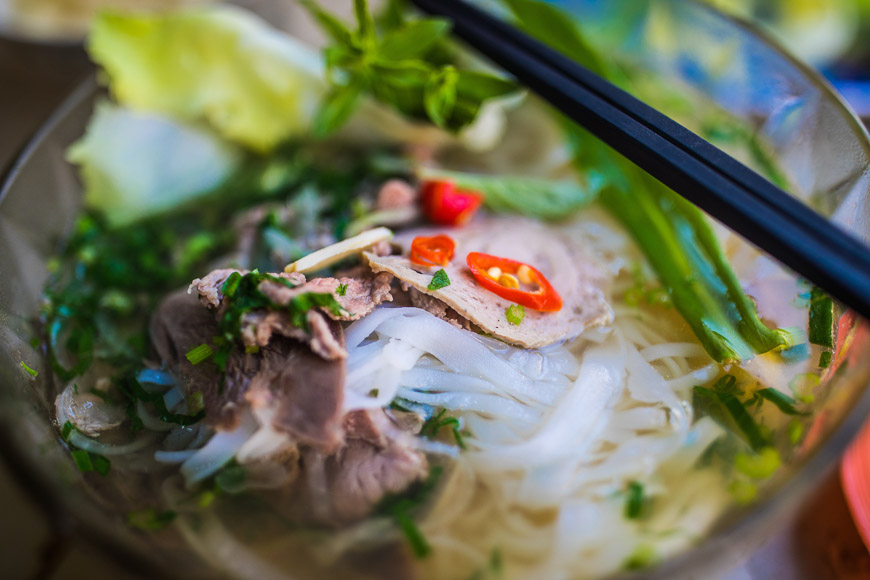
Like many Vietnamese staples, phở noodles are made from rice but unlike others, these noodles are flat and rectangular, giving them more heft for heartier meals. You may know of phở bò or phở gà, the delicate soup from Northern Vietnam that locals across the country enjoy for breakfast. When in Hanoi, you can also try phở noodles in stir-fried dishes and fresh rolls.
Bún (steamed round rice noodles)
Bún is one of Vietnam’s most versatile noodles. The hint of sourness coming from the leaves used in the steaming process perfectly balances Vietnam’s savoury and sweet dipping sauces. Thin and round with a soft bite, these snow-white noodles are prepared in iconic noodle soups, and provide a light starch component for spring rolls and noodle salads with grilled meat.
Miến (dried glass noodles)
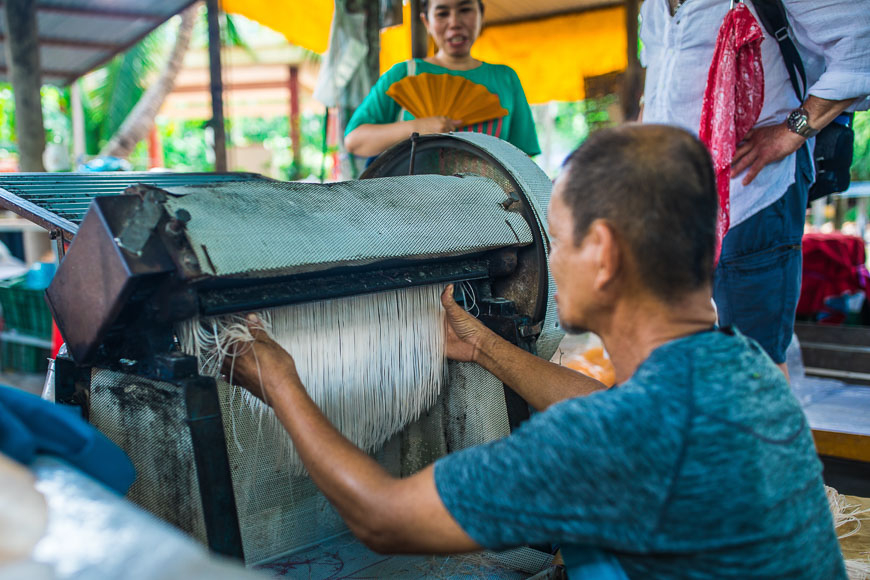
In Vietnam ‘miến’ refers to clear glass noodles or vermicelli. These noodles are thin and cylindrical, with a slightly chewy texture. Mien is cooked in soups such as miến gà (glass noodles with chicken), prepared as a base in dishes such as miến lươn trộn (dry glass noodles with crispy eel), or used as filling for deep-fried snacks such as bánh gối (pillowy pork and mushroom empanadas.)
Mì (wheat or egg noodles)
Mì is the Vietnamese name for thin wheat noodles. These noodles are often mixed with egg yolk to add yellow colour, then are dried or cooked al dente in hot soups. Mì noodles are most easily found at stalls serving mì vằn thắn, a Vietnamese wonton noodle soup that combines steaming green onion and shallot broth, char siu pork, and sliced boiled eggs.
Cooking techniques and preparation
Noodle salads
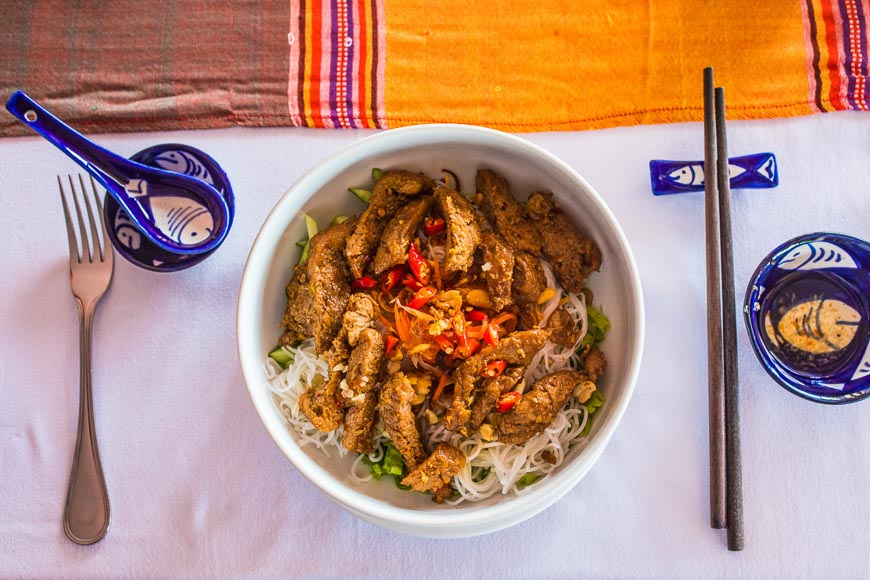
When the weather heats up, Vietnamese stay cool with light noodle dishes and fistfuls of crisp herbs and greens. For lunch on a summer day, try bún chả or bún thịt nướng. Both dishes star grilled pork atop a bed of dry bún noodles, with shredded lettuce, sprigs of herbs and light fish sauce bringing all the elements together.
Noodle soups
Much has been said about Vietnam’s famous phở bò, but you’ll be delighted to know countless other varieties of noodle soups await you in Vietnam. Soupy dishes that should appear on any respectable Vietnam hit list are bún bò Huế, hủ tiếu Nam Vang, and bún riêu. Noodle soups in Vietnam are usually seasoned to taste at the table, with lime, chilli, and aromatic herbs.
Noodle rolls
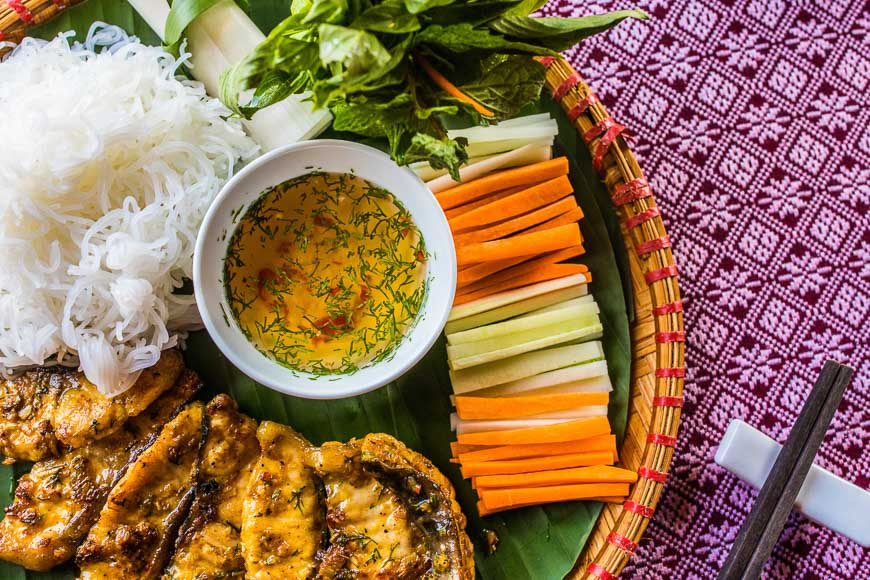
Vietnamese have perfected the art of small rolls with big flavours. Fresh noodles are an essential textural element in Vietnam’s mouthwatering rolls, including nem lụi, bò bía, and gỏi cuốn. Across the country you’ll also see fresh fish — fried or grilled — presented with noodles and an array of vegetables designed for rolling by hand and dipping in fish sauce.
Fried noodles
Stir-fried noodles — called mì xào — are lovely when cooked the local way: the freshest of vegetables, sautéed alongside onions, meat, or seafood, garnished with coriander leaves and served with chilli-infused soy sauce. You may also like to hunt down phở chiên phồng: deep-fried squares of pho noodles, topped with cooked tomatoes, choy sum, beef and gravy.
One-of-a-kind noodle dishes
Mì Quảng
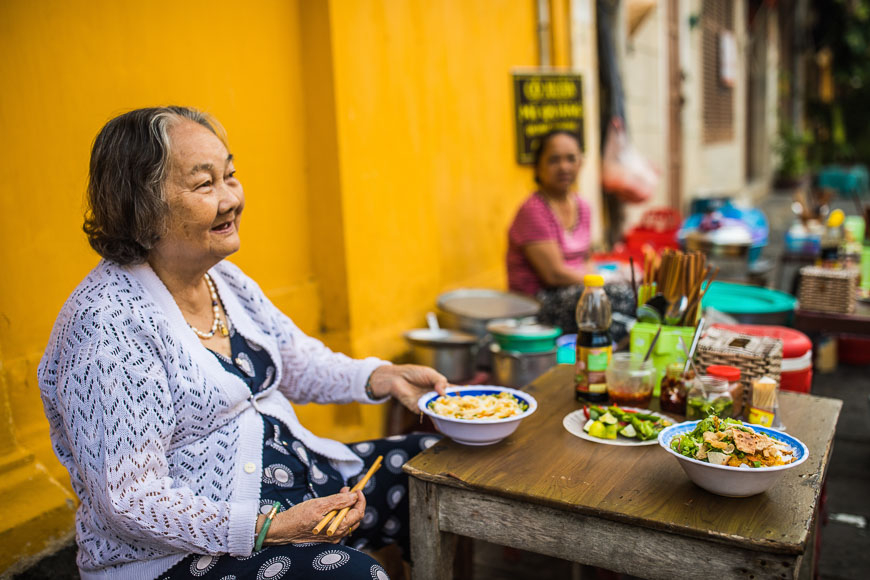
These noodles from the Quảng Nam region in Central Vietnam are in a class of their own. Each bowl is composed of a handful of wide, flat, rice noodles, a ladle of peanut-y broth, sliced pork, boiled shrimp, fresh lettuce, quail eggs and sesame rice crackers. Look for Mì Quảng in the alleyways and restaurants of Đà Nẵng and Hội An.
Bánh đa đỏ
Thin, flexible and chewy, these rectangular delights are originally from Hải Phòng City along the northern coastline. A special combination of caramel and gấc fruit powder give the noodles their distinct brown colour. You can slurp them up with a crab and tomato or fish and dill broth at eateries in Northern Vietnam.
Bánh canh
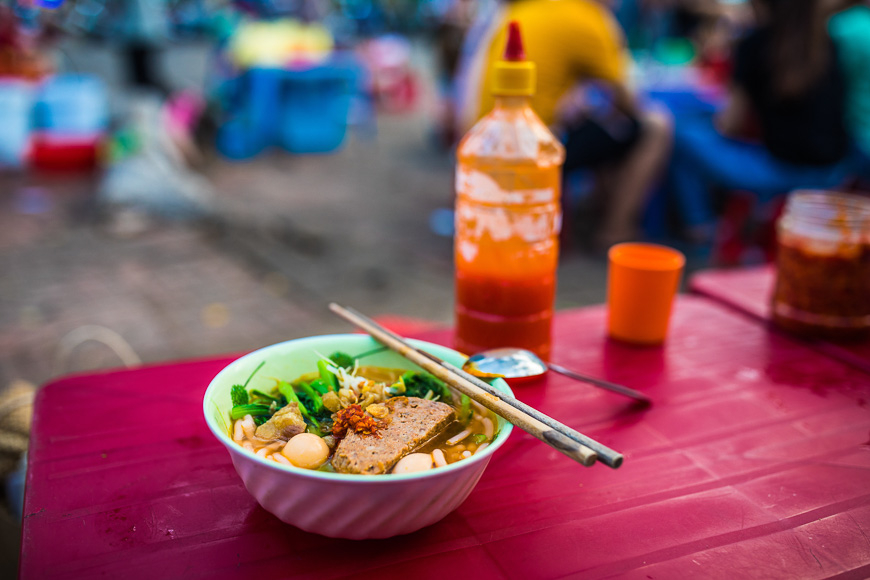
These thick tapioca noodles are less famous than many other Vietnamese noodles but worth a try for their slippery goodness. A meaty version made with pork knuckles, sausage and crab is popular in many parts of Vietnam. In the Mekong Delta region, bánh canh soup is a nourishing breakfast prepared with freshwater fish, delicate fish bone broth, and gently cooked herbs.
Cao lầu
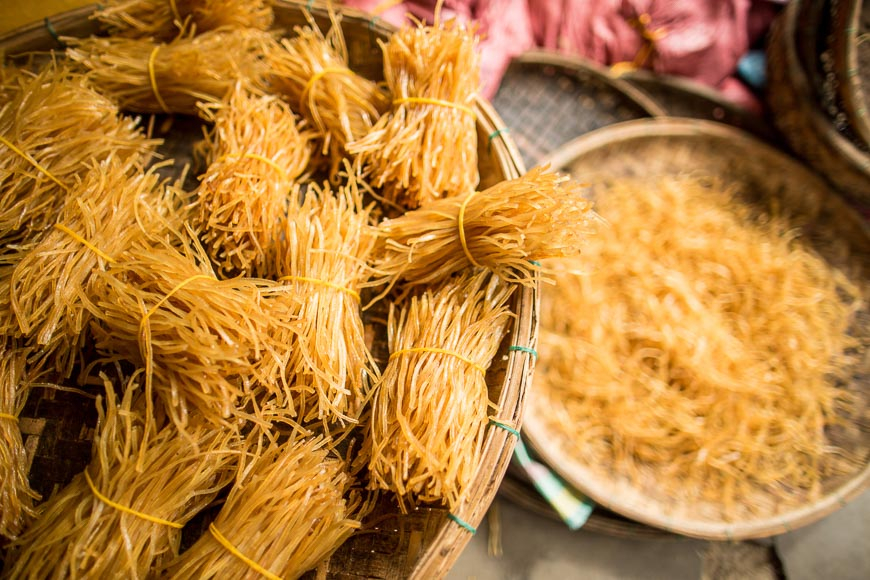
Real cao lầu can only be found in the former trading port of Hội An. These udon-like noodles are traditionally dipped in mineral-rich water from the local well, giving them a texture and flavour that can’t be duplicated. A savoury sauce infused with lemongrass is poured over a bed of noodles and bean sprouts, which is then topped with roasted pork slices and leafy greens.




